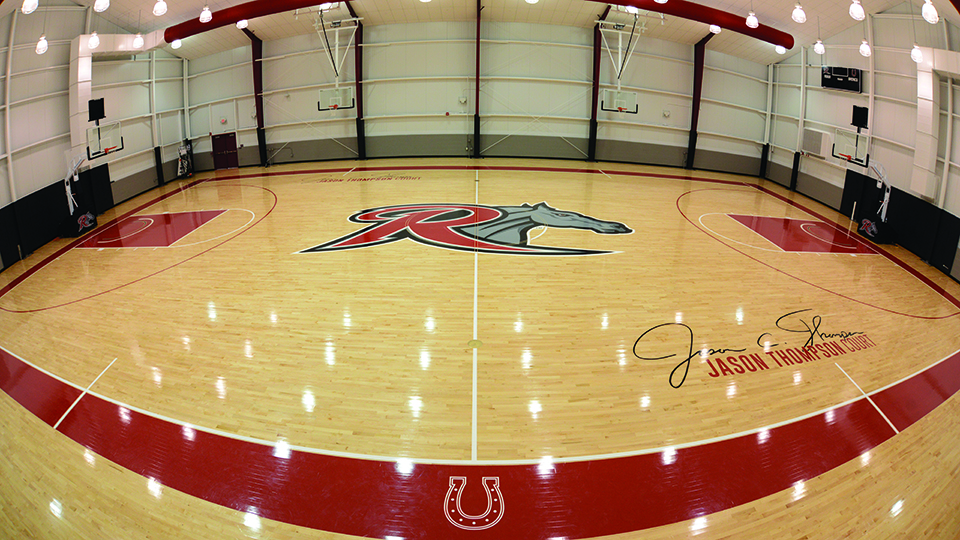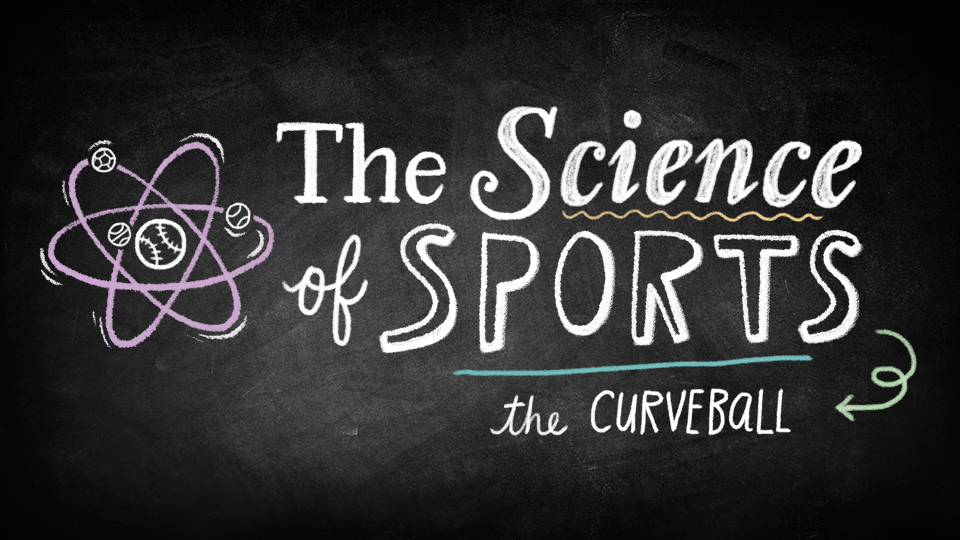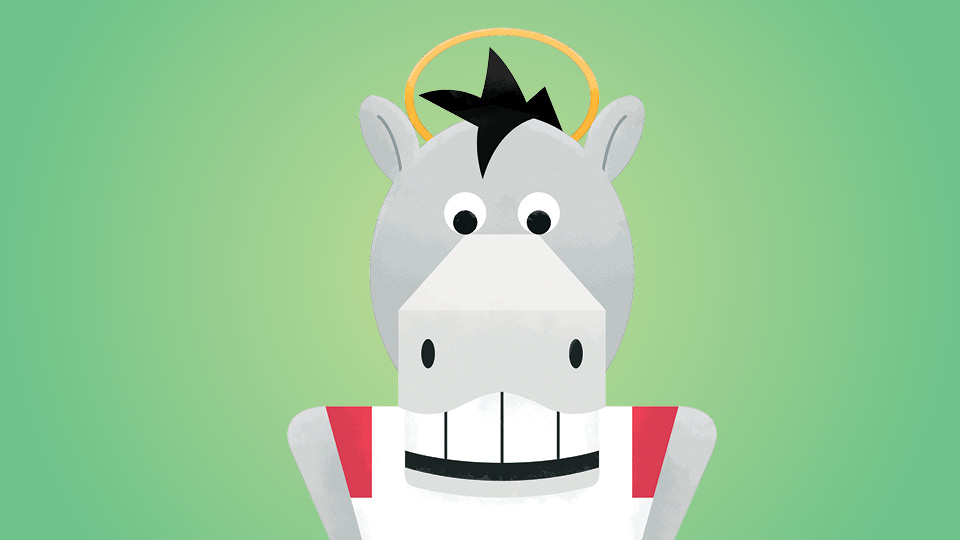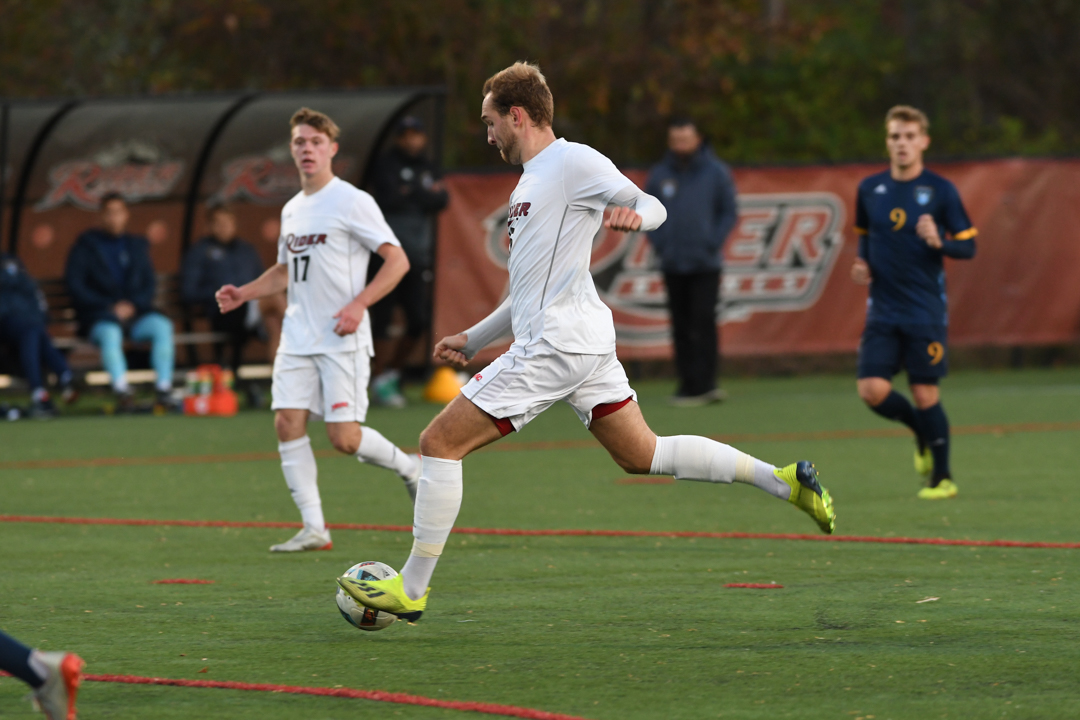Practice made perfect

Jason Thompson Court, named for the 2008 alumnus and current member of the NBA’s Toronto Raptors, is housed inside a new 8,400 square foot basketball practice facility on the Lawrenceville campus. The facility was completed in April 2016 as the second phase of the multi-phased Alumni Gym project. A ribbon cutting was held on Sept. 17. The third phase, which includes the construction of new men’s and women’s basketball office suites inside a space that will connect Alumni Gym and the practice facility, is expected to be completed in September. Fundraising for future phases is underway.
Bronc Bits
The Eastern Wrestling League named Gary Taylor, who is fourth on the all-time NCAA Division I career win list, Coach of the Year and All-American sophomore Chad Walsh Wrestler of the Year.
Junior Robin Perkins was named Second Team All-MAAC while senior Teddy Okereafor and junior Kahlil Thomas were named Third Team All-MAAC.
Sophomore Zack Molloy was named the MAAC Most Outstanding Performer. He won three individual events at the MAAC Championships and was a member of four winning relays. In June, Molloy competed in the 200 free for a chance to qualify for the United States Olympic team.
The golf team tied its best-ever score in MAAC play (293) on the final day to place third in the MAAC Championships, with junior Parker Mann earning All-MAAC honors.
Sophomore Nick Margevicius earned Second Team All-MAAC and MAAC All-Academic team honors. In the MAAC, Margevicius was second in earned run average (2.57) and sixth in strikeouts (67).
Senior Nicolette Mateescu qualified for the NCAA East Regional Track & Field Championships in Jacksonville, Fla. This spring, Mateescu set Rider records for the 10,000m, the 5,000m and the 3,000m.
The Science of Sports: The Curveball

The fastball is junior Drew Tumbelty’s pitch of choice, the one that primarily helps him get the Broncs out of a jam in the 9th inning and preserve a victory. But the right-handed closer keeps a curveball in his back pocket to keep batters guessing.
Pitchers have been using the curveball for almost 150 years to fool batters, relying on its low velocity and big break as it approaches the plate to freeze hitters and keep them swinging and missing. Good hitters can see the way a ball is spinning to determine what kind of pitch is coming toward them, where it will wind up and whether or not to swing. Generally, a late-breaking curveball is more effective at beating hitters than one that breaks big, but the pitch can be difficult to control.
How does it work?
To throw a curve, the middle finger is placed along the bottom seam, with the thumb on the back seam, creating a C shape. When pitchers reach the peak of their throwing motion, they begin to rotate their throwing hand and wrist and as the ball is released they snap their middle finger down, which guides the trajectory of the ball.
To get a better snap, Tumbelty grips the ball tighter with his middle finger than his pointer when he’s throwing a curve, and pulls his throwing arm hard to his opposite hip. The snap creates topspin, meaning the top half of the ball spins toward its direction of motion, with the bottom half spinning against it. Such spin causes the ball to dive as it approaches
its target.
Why does it work?
The explanation of why the ball dives begins with Newton’s third law, which states that for every action, there is an equal and opposite reaction. When a pitcher fires a pitch into a catcher’s mitt, the catcher feels the force of the pitch through the impact, but he or she also exerts a force to slow the ball down. That’s an example of the third law in practice.
Something similar happens to a curveball. When a ball is thrown with topspin, “Air hitches a ride to the top side of the ball and gets dragged along and slightly down towards the ground,” says physics professor John Bochanski, “but the air on the bottom doesn’t get on the same track. The net result is that a top spinning ball deflects some air toward from the sky.”
Essentially, air that is pushed up towards the sky pushes the ball down. The opposite is also true, which is why a ball thrown with backspin, like a fastball, causes it to stay in the air longer.
The ball’s trajectory is described more precisely by the Magnus Effect, which is named after the 19th-century German physicist Gustav Magnus who studied it. The Magnus Effect states that a spinning object moving through air will deviate from a straight path.
Good sports

Community service plays a major role in the mission of Rider Athletics to create well-rounded student-athletes who are studying and competing at the University. This year, Rider’s student-athletes and coaches tallied 3,888 hours of community service.
Rider has participated in the 11-team MAAC Goodworks Challenge, which runs annually from Sept. 1 to April 30, ever since it began in the 2009–10 academic year. Until this year, when a rule change altered the point system, schools that took part in the Challenge earned points for every hour volunteered, with bonus points awarded for large groups. Rider won the inaugural Goodworks Challenge, donating the $1,000 prize to Homefront, a nonprofit whose mission is to end homelessness in Central New Jersey. Since then, the University has finished in the top five each year.
Putting on a Clinic
Rider’s student-athletes undoubtedly have one thing in abundance to contribute to the world: their athletic talent! And they take many opportunities to share their skills with the next generation of up-and-coming athletes.
Rider’s women’s teams hosted a free clinic for girls as part of National Girls and Women’s in Sports Day promoting female participation in all sports. The women’s basketball team held a basketball clinic at a Parkway Elementary School in Ewing, N.J., where students had the chance to meet the team and ask questions, as well as run through basketball drills.
At a clinic of its own at Parkway Elementary, the men’s basketball team wowed the kids with a slam dunk contest and later mixed it up with the elementary-aged players during a game. Rider’s wrestling coaches joined the Wrestling Crew Wrecking Club to demonstrate proper technique and wrestling conditioning.
Feeding the Hungry
New Jersey consistently ranks as one of the most affluent states in the country, but not every resident is sharing in the wealth. More than one million people living in the Garden State suffer from food insecurity, meaning they lack access to sufficient quantities of affordable, nutritious food.
Rider Athletics helps address the problem by collecting and delivering food baskets to local nonprofits and food banks dedicated to responding to hunger. This year, the baseball team served Thanksgiving lunch at the Trenton Area Soup Kitchen (TASK) and the wrestling team visited Mercer Street Friends, which is dedicated to addressing hunger in Mercer County, N.J., for Thanksgiving, delivering baskets of food for the underprivileged. Not stopping there, the team also helped organize and clean a local food bank. Other teams that got involved include field hockey and women’s basketball, which were seen on and off campus volunteering their time.
Raising Money and Awareness
The players and coaches at Rider do more than get involved; they truly make a difference by raising money and spreading awareness.
In April, members of the men’s and women’s soccer and field hockey teams participated in Rider’s Relay for Life, the all-night event that raises awareness and funds for the battle against cancer. This year, Relay for Life raised more than $60,000.
Rider Athletics partnered with the local blood council to raise awareness about platelet donations and its benefits. Players and coaches also took part in the annual Stomp out Stigma walk, which is dedicated to promoting awareness about mental health. The men’s basketball team designed wall murals at Children’s Specialized Hospital in Hamilton, N.J., to show support for children with illnesses.
